Test Bank Evidence Based Practice Nurses Appraisal Application Research 2nd Schmidt Brown
$38.00
Test Bank Evidence Based Practice Nurses Appraisal Application Research 2nd Schmidt Brown
- Description
- Reviews (0)
Description
You will receive this product immediate after placing the order
Get your degree with ease by using our files. We do not keep any logs and we do not log any information. What does this mean for you? This means, your order is completely anonymous and confidential. Part of our service allows you to purchase these files without anyone else knowing. There is no risk and you have nothing to lose. If you are using this very text book in school right now, then you will need this nursing test bank to learn important core knowledge so you can be the ultimate nurse. Add this product to your cart and checkout to receive the download for your nursing test bank for Test Bank Evidence Based Practice Nurses Appraisal Application Research 2nd Schmidt Brown
*** BELOW, IS A SAMPLE FROM THIS NURSING TEST BANK, YOU WILL RECEIVE THE CHAPTERS VIA PDF OR WORD DOCUMENT ***
WE REMOVED THE ANSWERS ***
Testbank for Schmidt & Brown
Evidence-Based Practice for Nurses: Appraisal and Application of Research, 2e
Testbank prepared by:
Arlene H. Morris, EdD, RN, CNE and
Debbie Faulk, PhD, RN, CNE
both of Auburn Montgomery School of Nursing
CHAPTER 1
WHAT IS EVIDENCE BASED PRACTICE?
Multiple Choice
Definition of research (p. 14)
1. Which of the following is the best definition of research?
a. Critically thinking about problems that occur in health care to determine possible solutions.
b. Information that is based on personal experience or tradition.
c. Planned and systematic activity that leads to new knowledge and/or the discovery of solutions to problems or questions.
d. Trying a variety of approaches to a clinical problem and settling on the approach that is effective more often than not.
Definition of research utilization (p. 4)
2. Which of the following is the best definition of research utilization?
a. Applying research findings from individual studies to practice.
b. Analyzing multiple research studies to synthesize findings.
c. Appreciating the importance of clinical decision making.
d. Using previous personal experience to build confidence.
Definition of EBP (pp. 4-5)
3. Which of the following is the best definition of evidence-based practice (EBP)?
a. Application of research findings based on scientific theories in a clinical setting.
b. Research studies that correspond to nationally established priorities for healthcare, conducted by experts in their fields.
c. Use of theory-derived, research-based information in making decisions about health care delivery, with consideration of individual needs and preferences and the clinical expertise of the provider.
d. Using the individual health care provider’s perception of truth without conscious attention or reasoning.
Difference between research utilization and EBP (pp. 4-5)
4. Which of the following best describes the difference between research utilization and EBP?
a. Research utilization is a process of evaluating multiple studies for the most generalizable findings; EBP is use of the most recent study on a topic.
b. Research utilization involves changing practice based on findings of a single research study; EBP is the syntheses of findings from multiple studies to incorporate with practitioner skills and client preference to determine best care.
c. Research utilization is the application of research findings to health care practice; EBP is considered in selecting medication options.
d. Research utilization is review of research publications; EBP is using the healthcare provider’s perception of what care would be best in individual situations.
Evidence from other disciplines (p. 6)
5. In what way can evidence from disciplines other than nursing be helpful?
a. Theory based non-nursing evidence can provide a basis on which to build new evidence.
b. Non-nursing evidence supports the use of nursing knowledge obtained by trial and error.
c. Clinical decision making can be based on findings from single non-nursing research studies.
d. All evidence is equally important to the practice of nursing.
Identification of sources of evidence (p. 6)
6. You are a new nurse working at XYZ hospital. Your preceptor tells you to dangle Ms. Jones’ legs on the side of the bed before you attempt to assist her to a chair. You ask your preceptor why this is done and she answers, “This is what we have always done, so go do it.” This is an example of which type of evidence?
a. Trial and error
b. Intuition
c. Borrowed evidence
d. Tradition
Identification of sources of evidence (p. 6)
7. You are a new nurse working at XYZ hospital. Your preceptor tells you to dangle Ms. Jones’ legs on the side of the bed before you attempt to assist her to a chair. You ask your preceptor why this is done and she answers, “Because I said so.” This is an example of which type of evidence?
a. Intuition
b. Tradition
c. Authority
d. Borrowed evidence
Identification of sources of evidence (p. 6)
8. Trial and error is not a preferred approach for delivering nursing care because
a. it is not based on systematic scientific approaches.
b. it is not a sanctioned method by the American Nurses Association.
c. it is based only on intuition and therefore not scientifically based.
d. patient outcomes are always based only on level 1 evidence.
Identification of sources of evidence (p. 8)
9. Many nurses in clinical settings base nursing interventions on information obtained from
a. level 1 evidence.
b. individual research studies.
c. colleagues.
d. the American Nurses Association.
Barriers to adopting EBP (p. 8)
10. Studies have shown that the reasons that nurses do not draw on research are related to
a. communication problems.
b. individual and organizational factors.
c. personal disinterest.
d. rapid organizational changes.
Environment for EBP to flourish (p. 11)
11. Which of the following promotes consistent EBP practice changes in an institution?
a. Clinical experts such as Advanced Practice Nurses (APNs) should be the authority for any change in practices.
b. Change champions are needed on each work shift to facilitate practice changes.
c. Nurse managers must mandate research within healthcare institutions.
d. Opinion leaders should enforce adherence to their opinions.
Environment for EBP to flourish (p. 10)
12. One method for overcoming a lack of resources to access evidence is to
a. devote 15 minutes a day to reading evidence related to a clinical problem.
b. attend conferences where clinical research is presented..
c. bookmark important Web sites that are sources of clinical guidelines.
d. collaborate with a nursing program for access to resources.
Barriers to adopting EBP (p. 9)
13. What steps can be taken to overcome the time barrier to adopting an EBP?
a. Devote 15 minutes a day to reading evidence related to a clinical problem.
b. Subscribe to e-mail summaries of research studies in your area of interest.
c. Take advantage of available technologies to provide quick and convenient access to relevant data and clinical guidelines.
d. All of the above
Parts of a research article (p. 18)
14. Which section of a research article provides an overview of the study?
a. Abstract
b. Introduction
c. Review of literature
d. Theoretical framework
Parts of a research article (pp. 18)
15. Which section of a research article identifies the problem being studied and includes a purpose statement and background information on the topic?
a. Discussion section
b. Introduction
c. Methods section
d. Results section
Parts of a research article (p. 19)
16. A major portion of a research article is the methods section, which includes a discussion of the study design, the sample, and the ____________ collected.
a. solutions
b. statistics
c. data
d. theories
Parts of a research article (p. 19)
17. The ____________ section of a research article outlines the methods used to analyze the data and notes the findings.
a. results
b. summary
c. introduction
d. abstract
Parts of a research article (p. 20)
18. Which section of a research article provides an interpretation of the study’s results?
a. Abstract
b. Introduction
c. Methods
d. Discussion
Ethical issues (p. 24)
19. The first regulations to protect human subjects in medical research studies were proposed by the ____________ in 1973.
a. American Medical Association
b. U.S. Department of Health, Education, and Welfare
c. U.S. Food and Drug Administration
d. Association of American Universities
Ethical issues (p. 31)
20. Which of the following forms the basis for ethical conduct in medical research internationally?
a. Jewish Chronic Disease Hospital study
b. Nuremberg Code
c. Tuskegee studies
d. Willowbrook studies
Short Answer/Fill-in
Identifying types of research
1. The category of research that addresses why or how phenomena are related is ____________.
Answer: explanatory (p. 15)
2. ____________ research aims to forecast when certain phenomena will occur.
Answer: predictive (p. 15)
3. The type of research that analyzes words to focus on the meanings individuals give to their experiences is ____________.
Answer: qualitative (p. 17)
4. Quantitative research focuses on collecting ____________ evidence, which is evidence gathered through observation using one or more of the five senses.
Answer: empirical (p. 15)
5. ____________ research is concerned with providing accurate observations of phenomena in natural settings
Answer: descriptive (p. 15)
Do you have any questions? Would you like a sample sent to you? Just send us an email at inquiry@testbanksafe.com (no spaces). We will respond as soon as possible.
Be the first to review “Test Bank Evidence Based Practice Nurses Appraisal Application Research 2nd Schmidt Brown”
You must be logged in to post a review.




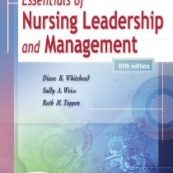
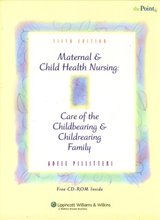
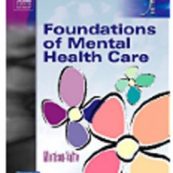
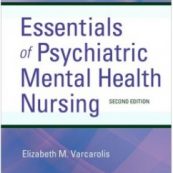
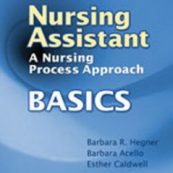

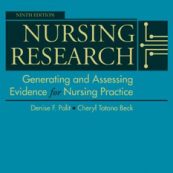
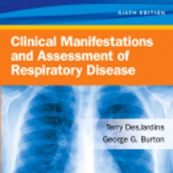
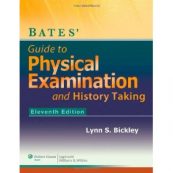
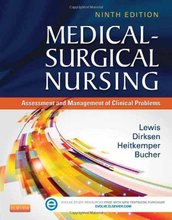
Reviews
There are no reviews yet.